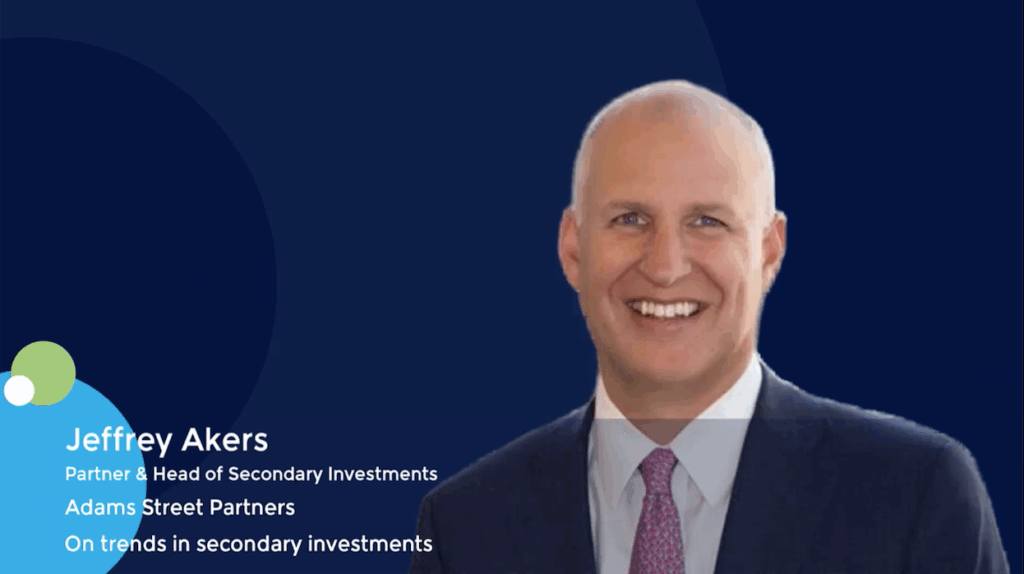Asia private equity 3Q analysis: AirTrunk underlines private equity-infrastructure crossover
- Data centre transaction dominates Asia deal flow
- PE and VC fundraising plummets to multi-year low
- India still leads the region on sponsor-backed IPOs
1) Investment: AirTrunk breaks records, China and India underwhelm
Capital deployed in Asia… USD 39.7bn, up 33% quarter-on-quarter, up 11% year-on-year
AirTrunk has arguably long since transitioned from private equity to infrastructure. On receiving around USD 300m in equity and debt from Goldman Sachs and Sixth Street in 2017, the company represented a relatively high development risk. It was building two facilities in Australia with an initial 20 megawatts of capacity but nurtured ambitions to reach 120 MW. Two more rounds yielded USD 950m.
By the time a Macquarie Asset Management-led consortium bought a majority stake in AirTrunk in 2020 at a USD 1.9bn valuation, the pipeline comprised 450 MW across five facilities in Australia, Hong Kong, and Singapore. Now Blackstone [NYSE:BX] has agreed to pay AUD 24bn (USD 16.2bn) for a relatively mature asset: 1.8 gigawatts of operating capacity, 11 facilities, and a footprint that includes Japan and Malaysia.
Data centre businesses have embarked on similar journeys before. For example, Quadrant Private Equity backed Canberra Data Centres in 2014, and supported an expansion of its facilities and customer base, before exiting to Morrison & Co-managed Infratil and Commonwealth Superannuation Corporation two years later with a 3.4x return. Future Fund bought into the business in 2020.
The rise of core-plus infrastructure has underlined this trend and extended it into other areas that combine asset-heavy characteristics and private equity-oriented operational expertise, from healthcare services to energy transition. Core-plus infrastructure – with its lower cost of capital, but also lower risk appetite – might be buying from private equity in one instance and competing with it in another.
AirTrunk bestrides the chart of Asia’s largest-ever buyouts, edging out Toshiba and Toshiba Memory Corporation, but for many it will do so uncomfortably. The historical top 12 range from semiconductors in Japan to technology in China to consumer in South Korea. However, that’s only after various businesses considered more utility-like in nature – such as ports and electricity grids – have been stripped out.
Nevertheless, AirTrunk has propelled an otherwise dismal third quarter for Asia private equity investment to USD 39.7bn, a level not seen since the first half of 2023, according to provisional data from AVCJ Research. Without this bumper transaction, the second-quarter total of USD 29.9bn – a five-year low – would not have been bettered.
AirTrunk isn’t the only deal populating the PE-to-infrastructure spectrum. The USD 2bn sale and leaseback of Rakuten’s mobile network assets, supported by a Macquarie-led consortium, is more infrastructure. For Australian radiology player Lumus Imaging, the definition isn’t so clear-cut; the business was acquired by Affinity Equity Partners for USD 656m, but Pacific Equity Partners was also in the running via its hybrid secure assets strategy.
Rakuten Mobile was one of four USD 2bn-plus deals announced during the quarter. The other three are sponsor-to-sponsor transactions: AirTrunk, plus Alinamin Pharmaceuticals in Japan (Blackstone to MBK Partners) and Ecorbit in South Korea (KKR to IMM Private Equity and IMM Investment). Alinamin is the second asset Blackstone has exited to MBK this year, following Korea-based Geo-Young.
The large-cap line-up also featured two quirky representatives from Southeast Asia: CVC Capital Partners took control of Siloam International Hospitals, eight years after buying a minority stake; and EQT Private Capital Asia agreed to acquire PropertyGuru [NYSE:PGRU], facilitating exits for KKR and TPG Capital, and ending 30 months of public ownership initiated by a merger with a special purpose acquisition company (SPAC).
Activity was skewed towards Asia’s developed markets. Japan deal flow rebounded to USD 6.5bn, nearly twice the second quarter showing, while South Korea more-or-less held steady, and Australia registered an AirTrunk-enabled four-fold increase. Southeast Asia, meanwhile, posted its strongest quarter in two years, although Siloam and PropertyGuru accounted for about two-thirds of the USD 3.3bn total.
Only one Indian investment made the top dozen for the quarter. Even though the country accounted for six of the next 12 entrants, deal flow was disappointing. Deployment amounted to USD 3.9bn, down from USD 7bn in the second quarter. It is the lowest three-month total recorded in seven years.
China fared no better. A paltry USD 2.3bn was put to work – one must go back to 2013 for a weaker quarterly performance – with only one investment qualifying for the top 25. It remains to be seen whether this signals a market bottom. April-June was also dispiriting, with deployment coming in at USD 6.9bn, well short of the USD 13.2bn average for the eight prior quarters.
2) Fundraising: Drop-off emphasizes lack of depth in Asia ex-China
Capital raised for Asia (excluding renminbi funds)… USD 4.6bn, down 66% quarter-on-quarter, down 70% year-on-year
The sorry state of Asia private equity fundraising in the third quarter is perhaps best captured by a New Zealand venture capital firm occupying fourth spot in the list of largest closes. Waterman Capital announced it had secured NZD 300m (USD 183m) for its fifth fund in September through a first and final close, exceeding the NZD 230m raised in the previous vintage. For others, the journey isn’t so smooth.
A total of USD 30.2bn was committed to Asia-based fund managers over the three months, but 85% of that went to renminbi-denominated vehicles. At CNY 18bn (USD 2.4bn), the latest local currency offering from HongShan – formerly Sequoia Capital China – represents the third-largest close in the quarter and is one of 22 renminbi funds in the region’s top 25.
Remove the renminbi component, which is largely sheltered from global trends, and the picture becomes bleak. While the final total might be revised upwards as previously undisclosed activity comes to light, it is hard to draw positives from USD 4.6bn. This compares to an ex-renminbi total of USD 13.8bn in the second quarter and an average of USD 21.7bn for the eight quarters before that.
The China factor is obvious and unavoidable. Between October 2021 and September 2023, an average of USD 5.2bn was committed to managers in the ex-renminbi space every quarter. For October 2023 to date, that figure is USD 1.2bn, with approximately USD 500m raised in the July-September period.
The perceived redistribution of capital from China to other markets is apparent in fundraising data. In the four quarters that have charted China’s decline, the share of capital flowing to Australia, India, Japan, and South Korea was 57%, 38%, 68%, and 84%. However, percentage-based analysis obscures the fact that these markets, despite their appeal and the presence of a handful of proven managers, lack depth.
Japan accounted for USD 6.3bn – or nearly half – of Asia fundraising in the second quarter. While its share was still one-third in July-September, this amounted to USD 1.5bn in US dollar terms. Longreach Group, a North Asia-focused GP most active in Japan, is joined in the top 10 closes by two VCs, Beyond Next Ventures and Keio Innovation Initiative, and J-Sigma with a first close on its latest buyout fund.
South Korea is even streakier, its contribution swinging from single digit in the first quarter to negligible in the second to 35% in the third. Hahn & Company moved the needle, securing USD 3.4bn for its fourth fund in July. This is the biggest single-country fund in Asia outside of Japan. For context, the next largest Korea vehicle raised by an independent manager – excluding other Hahn & Co funds – is USD 1.8bn.
The third-quarter total is also soft due to the absence of large-cap global managers, with CVC Capital Partners and TPG Capital reaching final closes on their latest Asian offerings in the first half of the year. The most recent development on this front is Blackstone and EQT Private Capital Asia embarking on new fundraises, targeting USD 10bn and USD 12.5bn, respectively. Their progress will be closely scrutinised.
3) Exits: India enjoys IPO boom, mixed picture for liquidity everywhere else
Proceeds realised from Asia… USD 28.7bn, up 131% quarter-on-quarter, up 53% year-on-year; proceeds from IPOs involving PE-backed Asian companies… USD 4.5bn, up 18% quarter-on-quarter, down 64% year-on-year
The India IPO bandwagon continues to roll. The second quarter of 2024 was marked by Indian exchanges contributing the largest share of proceeds from private equity-backed listings in Asia, ending years of dominance by mainland China. In the third quarter, the country extended its lead, accounting for USD 2.1bn out of a region-wide total of USD 4.5bn. Mainland China’s share was USD 1.5bn.
India was responsible for five of the six largest offerings, led by Ola Electric Mobility [NSE:OLAELEC] and Brainbees Solutions [NSE: FIRSTCRY], operator of mother-and-baby retailer FirstCry, which raised INR 61.5bn (USD 733m) and INR 41.9bn. They were followed by Premier Energies [NSE: PREMIERENE], Emcure Pharmaceuticals [NSE:EMCURE], and Akums Drugs & Pharmaceuticals [NSE:AKUMS], with only Japanese start-up Timee [TYO:215A] breaking the Indian hegemony.
Ola Electric represents the largest Indian IPO in two years, and along with Brainbees, facilitated liquidity events for an array of private markets investors, from Chiratae Ventures to Tiger Global Management to SoftBank Vision Fund. FirstCry is especially significant for Chiratae, which first backed the company circa 2012 and re-upped multiple times, through its venture strategy and later through its debut growth fund.
New filings in India continue apace, which may bolster a regional sponsor-backed IPO market that remains a shadow of its former self.
Proceeds crept above USD 4bn in July-September, after two quarters below this level, but a rebound in China listings is necessary for meaningful rejuvenation. The average for the eight quarters ended December 2023 was USD 14.2bn, with the mainland alone generating USD 11.5bn.
Impending listings for Horizon Robotics – expected to raise as much as HKD 4.97bn (USD 639m) in Hong Kong, and Pony AI – which just filed in the US – offer some hope for offshore China exits.
As for other exit channels, AirTrunk is a distorting influence. The headline numbers indicate a more than 100% quarter-on-quarter increase to USD 28.7bn. Remove AirTrunk from consideration, however, and the total is more like the second-quarter figure of USD 12.4bn.
IHH Healthcare’s USD 907m purchase of Malaysia’s Island Hospital from Affinity is the fourth-largest trade sale of 2024 to date. However, there were few transactions and even fewer of this scale, with USD 3.3bn from approximately 50 announced deals compared to USD 6.6bn from 100 in the second quarter. Upticks in public market sales and sponsor-to-sponsor sales helped redress the balance.


















